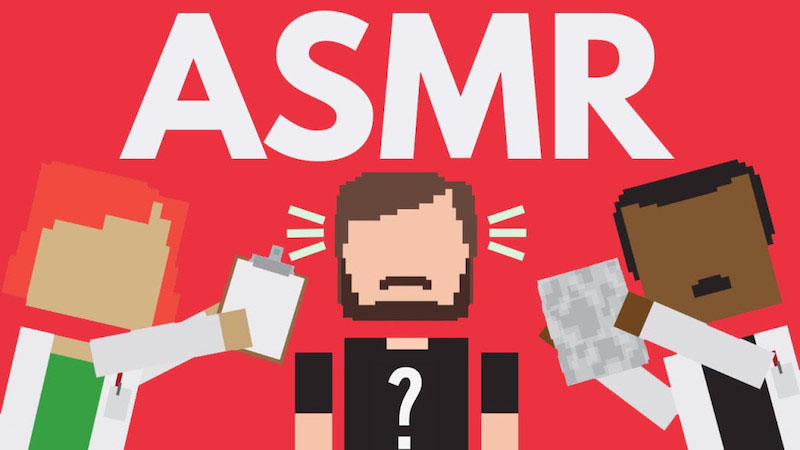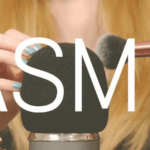Although scientists have yet to determine the exact cause of ASMR, there is ample evidence to suggest that the sensation is real and can help reduce stress while promoting physical and mental well-being.
What is ASMR?
 ASMR – Autonomous Sensory Meridian Response
ASMR – Autonomous Sensory Meridian Response
ASMR stands for “Autonomous Sensory Meridian Response,” which translates to “Autonomous Sensory Meridian Response” or “Automatic Sensory Stimulation Response”. The term can be broken down as follows:
Autonomous refers to something that is self-governing and uncontrolled.
Sensory pertains to the senses or sensation.
Meridian indicates a peak or pinnacle.
Response refers to a reaction.
 Watching ASMR videos can feel like a tingling sensation starting from the scalp and moving down the spine.
Watching ASMR videos can feel like a tingling sensation starting from the scalp and moving down the spine.
According to Futurism, the ASMR phenomenon occurs when one watches and listens to videos featuring gentle whispering. Many individuals describe the sensation of watching ASMR videos as a tingling sensation starting from the scalp and moving down the spine.
Is the Feeling of ASMR Real?
While the exact cause of ASMR remains unknown, it is intriguing that scientists have discovered its benefits in stress reduction and overall physical and mental well-being.
 ASMR has been found to reduce stress and promote physical and mental health.
ASMR has been found to reduce stress and promote physical and mental health.
Noted neurologist Steve Novella, who has extensively studied ASMR, suggests that the phenomenon may be triggered by a specific area in the brain. Furthermore, many individuals believe that ASMR videos serve as a panacea for ailments such as depression, anxiety, and sleep disorders.
Additionally, in 2018, a team of researchers from the Department of Psychology at the University of Sheffield, UK, conducted a study published in the journal PLOS ONE, revealing surprising insights into the ASMR phenomenon. This was one of the first studies to explore the impact of ASMR on human health.
To understand the true mechanism of ASMR, the authors divided their study into two parts:
 Investigating the true mechanism of ASMR
Investigating the true mechanism of ASMR
In the first part, they asked over a thousand individuals to describe their personal feelings after watching ASMR-inducing videos on YouTube. Out of the participants, 813 reported experiencing ASMR. They described feeling excited and calmer compared to those who did not experience ASMR.
The second part of the study involved approximately 110 volunteers, half of whom reported experiencing ASMR. However, this time, the researchers connected the volunteers to a series of sensors and electrodes to measure their physiological responses while watching ASMR-triggering clips.
The results showed that those who watched the ASMR-triggering videos experienced a decrease in heart rate of 3.41 beats per minute, on average. In contrast, the heart rate of those who did not watch ASMR videos remained unchanged.
 ASMR is real and offers emotional and physiological benefits.
ASMR is real and offers emotional and physiological benefits.
Researcher Giulia Poerio, who conducted the study, shared: “The average heart rate decrease in ASMR viewers can be compared to other research on the physiological effects of stress-reduction methods like music or mindfulness meditation.”
In conclusion, the scientific team believes that ASMR is a genuine phenomenon that provides emotional and physiological benefits. The scientific basis of this study also opens up possibilities for developing new forms of brain and mental health therapies in the future.
While ASMR has not been scientifically recognized, assessments by medical professionals and empirical studies suggest that the sensation is real. The ASMR phenomenon induces a sense of relaxation, excitement, or even a tingling sensation from the brain down the spine.
In this article, we have compiled a summary of ASMR. We hope that through this article, you will gain additional insights into ASMR and be able to explore the fascinating aspects of this phenomenon through various videos.
Facts About ASMR You Might Not Know
Have you ever experienced a tingling sensation that starts from the back of your neck, travels down your spine, and spreads throughout your limbs when you hear sounds like rain falling, fire crackling, or someone whispering into a microphone? That’s called ASMR, and there are many things about ASMR that you probably haven’t known.



































